The Forest for the Trees: How to Cure Overwriting
Welcome to our new, exciting course for the year! Four editors are going to delve into The 12 Fatal Flaws of Fiction Writing and help you learn to identify and correct faulty writing that can weaken your fiction. You learned last year how to construct a solid novel, but if your writing is flawed, your book will fail.
With every post giving you Before and After passage examples, you will get a clear picture of what not to do as well as how to spot and fix such travesties. Be sure to join in on the discussion and share your thoughts and examples (both good and bad) to help your fellow writers. And ask questions if you need elaboration. We want to help you be the best writer you can be! So let’s begin!
Editor Rachel Starr Thomson tackles Fatal Flaw # 1: Overwriting
When you put pen to paper, it’s fully possible to underwrite. To fail to say what you meant to say. But just as possible, and more common, is overwriting—the tendency to say too much, in too many words, and crowd out the forest for the trees.
Overwriting takes many forms. Wordiness. Overuse of modifiers and weak sentence construction. Vagueness. Redundancy. Convolution. Pushing metaphors so far beyond the breaking point that they cease to be enlightening and become ridiculous instead. Purple prose.
(Wikipedia: “In literary criticism, purple prose is written prose that is so extravagant, ornate, or flowery as to break the flow and draw excessive attention to itself.”)
In all forms, overwriting loses the forest for the trees: readers get so snarled up in excessive words, tangled sentences, and overdone diction that the big picture is lost.
It’s not fun to read. And often, it’s not fun to write. If your words feel forced or unnatural while you’re writing them, you might be falling into this trap. It often happens when we try to “sound like real writers,” or we want to come across as particularly smart or poetic. In those cases we lose our own voices for something artificial.
Finding the Forest
You correct overwriting by letting go of your commitment to every individual tree, leaf, and branch and rediscovering the forest instead. Where’s the heart of the scene? The point of the dialog? The voice of the character?
There’s a story that tells how Michelangelo carved his famous David by chipping away everything that didn’t look like David. That’s how you cure overwriting.
BEFORE:
As the sun was sinking down far below the edge of the purple, colorful horizon at the edge of the world, Jenny raised her wineglass to her ruby red lips and sighed sadly to see the day end. “It’s over,” she breathed.
Behind her, her impossibly handsome Italian boyfriend, Calvino, pushed his chair away from the table where they had been eating dinner like a panther slinking through the shadows of a dark night in Africa. She was just thinking he had been sitting there too long and wondering when he would come to join her by the edge of the expansive gold-rimmed balcony with its fluted decorations patterned after a famous architect from 1743.
He started to come toward her, and she waited for a long, interminable minute, staring at the purple sunset clouds, until he walked across the balcony, approached her shoulder, and bent down slightly so he could whisper in her ear. “It’s never really over,” he murmured.
AFTER:
As the sun sank below the purple horizon, Jenny raised her wineglass to her red lips and sighed to see the day end. “It’s over.”
Behind her, Calvino pushed his chair away from the dinner table. It’s about time, she thought. She saw his dark Italian features from the corner of her eye as he approached her on the gold-rimmed balcony.
“It’s never really over,” he whispered in her ear.
In this example, the edited version is far shorter—and far more focused.
It cuts redundant language, so “As the sun was sinking down far below the edge of the purple, colorful horizon at the edge of the world” becomes “As the sun sank below the purple horizon.”
It cuts a lot of the small in-between actions that can so clutter prose: “She was thinking and wondering”; “he started to come toward her”; “he walked, approached, and bent down.”
The rewritten version also implies the relationship between the two characters through their actions and words, rather than explaining it outright. It cuts details that are irrelevant to the scene (the eighteenth-century architect) and a simile that, in the end, added nothing to the character or the moment.
By cutting all these examples of wordiness, we end up with a sharper scene—one that is focused on the forest. The tension between the characters. The lament over the end of the day. The promise of something more to come. Many a tree is gone, but the picture is clearer.
Extrapolate that first example over the course of an entire scene, or an entire chapter, and you can see why overwriting can be such a problem—and why learning to cut back, to focus on the scene you actually want your readers to see, can go such a long way toward creating a sharper, more vivid and memorable story.
Your turn:
What do you think? Would you have kept any details or wording in the BEFORE section? Why? Have you ever found yourself forcing words in order to sound smarter or more “writerly”? What were the results? Do any of the examples of overwriting given above regularly show up in your own work?

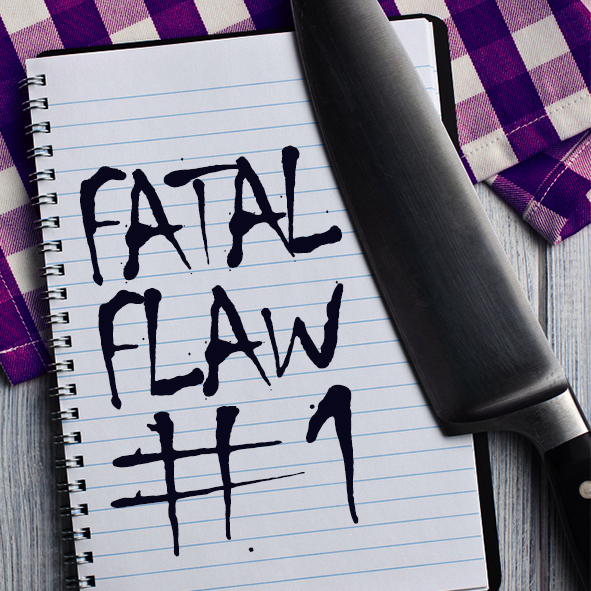
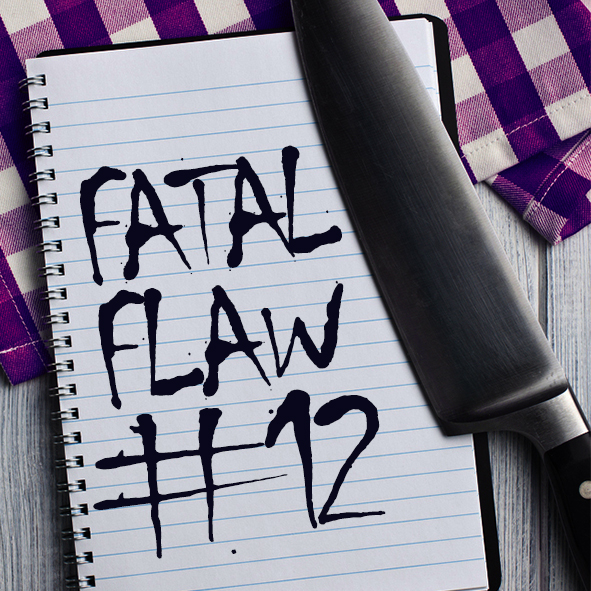
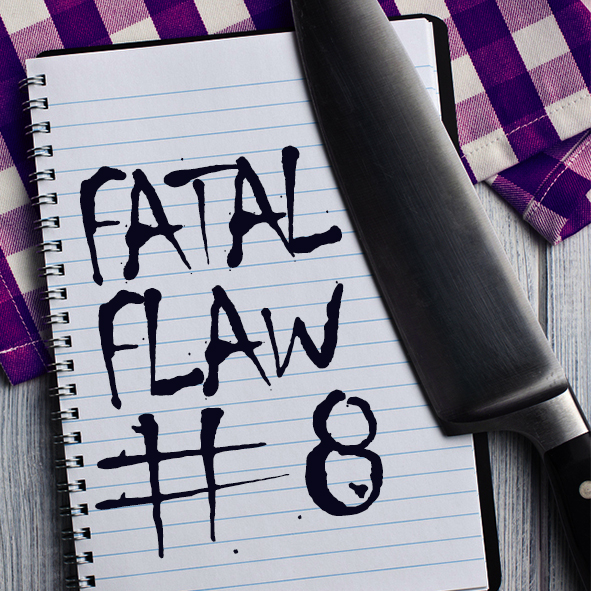
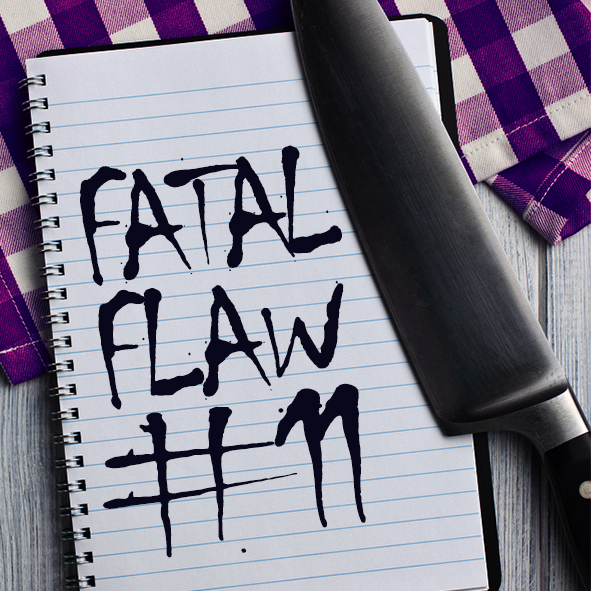
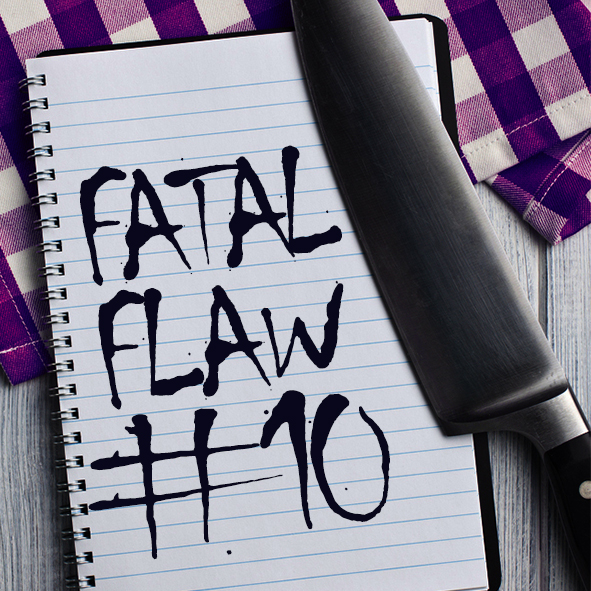
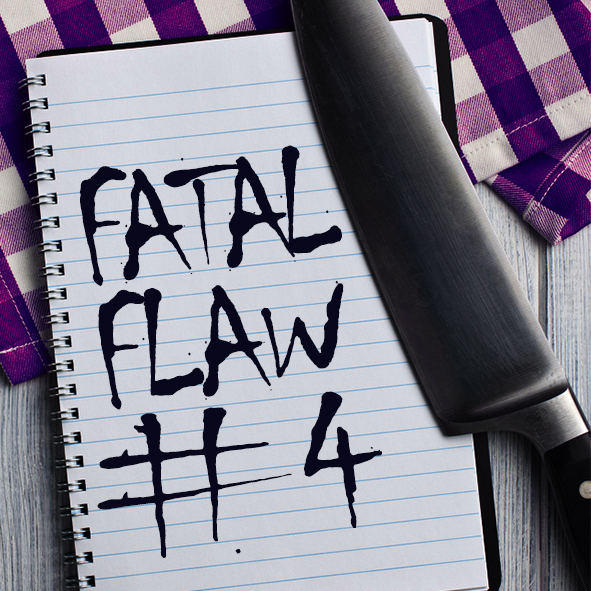




Your article makes me wonder if I did this! I think when I started writing, I felt I had so more ‘literary’. As you keep going, the plot becomes the main focus and not so much on descriptions. I like the example, the second was much better. Ahhh, I keep learning.
You wouldn’t be alone–most of us do this too much in the beginning. It’s like we’ve all got this inner troubador we need to kick out before we can really find our voice. Glad you enjoyed the article!
My problem is the reverse. Someone commented that my story was like a summary of a larger novel! Writing descriptive text in an attractive/engaging way is a challenge to me. Hopefully, you’ll cover that also.
We will! Thanks for the comment. A lot of writers are sketchy in their narrative, and there are lots of ways to tackle that. Happy writing in 2015~
Guilty! I’m getting better though with each new project. Loving “Shoot Your Novel.”
Thanks, Jeff! Glad to have you jump in and join the discussion.
Fantastic description of over-writing. I think most of us started there (Destination Infinity–you’re the exception). I think as we gain confidence, we trust our own voices and learn to forgo all the unnecessary descriptions and fancy words.
Thanks! I think learning to trust our voice is a HUGE key in all of this. Most of us have an idea of what “writing” is supposed to sound like. The more we write, the more we can work that out of our systems. That’s why I say that often, overwriting feels just as uncomfortable to WRITE as it does to read.
Happy 2015, Susanne!
This new course will be a weekly breath of encouragement as I slash through a first revision. I’ve already started a new 3-ring binder. 😉
The suggestion to focus on what we want our readers to SEE resonated with me. New insight: force-feeding details cramps the reader’s imagination and makes your story less memorable. Probably something to do with ‘memorizing’ vs ‘creating’? (in the reader’s mind, that is)
Thanks also to Rachel, Linda and Robin for sharing their expertise this year.
Thanks, Kathy! Great idea to print these out (until the book and workbook come out at the end of the year!) It’s always tricky to decide how much detail to put into every scene. I talk about that a bit in Shoot Your Novel. The key, yes, is to pick a few hallmark or iconic (if that makes sense?) details for a scene, things the character would not only notice but that can mean something to him (or shed light about him). Sensory details are important to bringing a scene alive, such as smells and sounds. But they can certainly be overdone to the point of tedium.
Agreed!
On another topic, is the 12 Key Pillars of Novel Construction book / workbook still on track for March release?
Thanks for asking. Yes, it is. The book’s first draft is done and I’m doing the workbook, both of which will have lots of new, additional material and examples in them!
I learned many years ago that when you’re considering details for your scene, try to make sure you don’t have more than one detail that gives us the same sense. So let’s say we’re talking about a greasy diner. You might mention a pile of soggy napkins on a table, or you might mention a gray, dripping mop propped up against the wall, but you wouldn’t want to mention both, because they both give the same image–in that case, wet and gross. Maybe you write about flypaper covered in dead and dying flies. Great, but then there’s no need to mention the flies hovering near the glass. The reader gets the sense, wet and gross, lots of insects, without more than one mention of them. I thought that made sense, so I’ve always tried to follow it.
My WIP does have a scene in a backwoods Appalachia tavern/café, where my heroine first becomes acquainted with a somewhat prudish older woman who’s appalled at the surroundings. A lot of potential for detail (and humor), but I’ll be taking your advice to heart. Thanks, Robin.
So glad it helped! Blessings as you write.
Sounds like a fun scene!
Kathy, you said, “Probably something to do with ‘memorizing’ vs ‘creating’?” YES–that’s a fantastic insight. Our minds are so good at creating detail that if we’re given room, we’ll remember details in a scene that the author didn’t put there. (For proof of that, reread a novel you loved as a kid or teenager and compare it to your memory of it.)
So yes, you want to give your readers introductory details but also leave them room to co-create.
Thanks, Rachel. Perhaps it’s also why the movie rarely measures up to the book. Our imaginations are free to run wild, but the screenwriter / producer has limitations.
(Exception to the rule: Colin Firth was a pretty fine Darcy! I think he exceeded my imagination…) 😉
Excellent advice for reducing wordiness and clearly and succinctly saying what you mean! Love the remark that the flowery prose takes the significance away from what truly matters—the tension. Without the tension, you lose your reader. No writer wants that!
Thanks! And yes, that’s exactly it. You don’t want to lose the STORY in the details.
This is fun! Over the past couple of days I’ve been de-bulking lengthy sentences and bulking up thin sentences. Well timed! Love it!
That’s great! I’m glad we hit at the right time for you! I hope some of the specific insights here help.
Thanks so much for this article, Rachel. I am working on the first draft of my first novel, so I have a long way to go. I love reading about how to correct things and hopefully it will help in the first draft as well, at least somewhat. I chuckled through your before section. I write a review blog for debut authors, and I see a lot of this, unfortunately. It is proof that they not only didn’t get an editor, but didn’t do much self-editing either. It makes an otherwise good story concept unsuccessful. I am on disability and don’t know how I’ll afford it, but somehow, I intend to get my debut novel professionally edited. I know a first book will never be perfect, but I do want it to be the best I can before I hit the “publish” button. That is if I self-publish rather than traditional–but that’s an entirely different discussion. 🙂
Glad it made you laugh! I was sorta going for that, but the truth is I see a lot of this kind of thing as well.
Looking forward immensely to this series. I know I have a tendency to overwrite. My husband tends to prefer very spare writing, so, when he beta reads for me, he highlights all the purple patches and extra words. It’s a good help, though sometimes I stubbornly hold on to my favorites. Perhaps this series will help me make sure I hold on to the right bits!
By the way, in the second example, I would cut out ‘red’ when referring to her lips. Aren’t most lips red? Unless they’re blue with cold, then it’s worth mentioning, or unless describing her lipstick. 🙂
To me, “red lips” conjures up a more vivid image than just “lips”–which can be all sorts of shades, and most of them I would say are more pink than red. But that, of course, is a matter of opinion and the reason we need writers writing from their own voice, with their own vision of the world :).
I, too, stumbled on the red lips. Interesting and enjoyable post. I’ve just discovered this blog, so will be hanging here a lot. 🙂
Thanks!
Glad to have you join us!
Overwriting is definitely one of my issues. Because my degree is in education, I sometimes fall back into the teaching mode and feel that I “must” explain several times whatever I’m writing about. I’m learning. Thanks for the post.
That’s a great insight, RJ. Teaching is definitely one reason people overwrite. Another is a tendency to explain what we’re doing because we’re just figuring it out ourselves (although this comes up more in nonfiction). It fiction it might look like a long prologue or opening paragraphs getting everything set up for what we’re “going to do” with the scene, rather than just doing it.
Thank you for this! As a former journalist I am used to cutting articles to the bone, ever mindful of “column inches”. In reaction to this, I go the other way, and get lost wandering in the forest of expansion! You have explained and cautioned well.
Thanks, Glenda! Glad I have your approval :). I really admire journalists and what they can do under the constraints they have.
This is a very helpful and clear example.
The only detail I’m surprised you removed was the one that noted he was her boyfriend. Isn’t that important?
Thanks, Larry! I’m glad you found it helpful.
And that’s a great question. Of course, it could be left in. I think their relationship is clearly implied through the action–the way they’re relating to each other, talking to each other–and would be made that much more so in the rest of the scene. (Since I’m only giving a snippet of a scene, a lot of context is missing.)
But I can tend to underwrite, leaving things to implication that actually need to be stated outright. It’s always a balancing act.
When I write dialogue it’s important to me to ask my writer self “would so and so say that?” or “Does that sound like …” It keeps the character consistent but it also keeps purple prose out. I’ve learned that you can do the same thing with the narrator. I think about my narrator’s personality and would the narrator say that? Suddenly, (my favorite bad fiction word) the edits are easier and fewer.
I talked about this a bit in last year’s posts on novel construction, under the pillars of writing style and voice. It is important that whoever the POV character is for the scene, that narrative voice sounds like him and not like the author. Voice is both spoken (dialog) and nonspoken (internal thoughts and narrative). Each character should have a unique voice.
I feel like in my writing I have a lot of commas, I use them to add description and detail, but I worry I’m over using them. is there a way to add to a sentence without making it overly drawn out? how do I know if a sentence is “too much” or “not enough”?
Thanks, Claire. First, getting some grammar books that teach comma rules will help you know when you really have to have them. Most people overuse them. But often they are missing. As to the other matter, there is a lot to consider: writing style, genre, scene action, etc. Dialog may be run-on because it fits the character. So it’s hard to give you a specific answer to a general question. We will be showing a lot of examples this month that will deal with this issue, so check over these posts, the before and after examples, and see if they help answer this for you! You can also share what you feel is a long, drawn-out sentence and we can show you how to rewrite to make it clear and concise.
Great article, though I’m with destiny: I tend to be more interested in the story than in the description, so I generally write sparse prose, especially in my short stories. Although not so sparse that people think it’s the outline.
In my novel, I keep on reminding myself to add description, so I’ll go pages without and then remember: oops, no description for a while, and put in a descriptive bit (but not purple).
But there are also other forms of over writing which I AM guilty of. For example, sometimes my characters go into too much detail (not necessarily description) about their day or things they go through, some of which end up being repetitive. I’m still editing, and I have critique friends who are good at pointing it out. And I agree, I wouldn’t consider publishing without letting a good, professional editor go through it. Where I’ll get the money for it I don’t know yet, but I’ve read too many poorly edited books to go that route.
Good reminder that overwriting can take forms that aren’t even addressed here (and some of our future posts will look at some of those–“info dumping,” for example, which is definitely a crime of overwriting among other things).
When I’m editing fiction, I often end up leaving a lot of notes asking for more description. In most cases it’s needed to keep the story visual and anchored in a “real” place and time, not just floating around in white space.
Lol, that makes me smile. That’s one of the main problems I see in the manuscripts I work on. Characters float in the void, somewhere out there where there is no weather, buildings, nature, temperature, or scenery of any kind. Sometimes I can’t tell if characters are indoors or outdoors, or even where in the world they are (if the book does take place on a world). I’ve read half a book before an author mentions something about the town or region. And my reaction is often something like, “Oh, he’s in Australia? I had no clue. I pictured this in Utah.”
The only thing I’d keep from the original bit is the part of the panther metaphor, I’d work in “panther-like stride” or motion or something along those lines. I think it’s a very descriptive and non wordy way to describe someone physically, but you don’t need the whole Africa bla bla nonsense.
Personally, I try to write clearly and to the point. I know I have no knack for rich prose and I’m not much of a wordsmith, so I see little point in forcing my writing in that direction. I try to compensate with interesting content instead. I do wish I was better in descriptions, not flowery ones but ones that paint a picture with just a few right words, like “the room looked like a hurricane and a tornado had a party” (yeah, my example sucks, told you I was bad at it 🙂 ).
I wondered if anyone would comment on the panther bit! I like it too, even though I edited it out for the “After” example–I even like elements of the Africa line. So thanks for your feedback on that :). Once again, there is no one “right” way to write a sentence, or a paragraph, or a scene–and not every author is going for the same goal.
As for your descriptions, keep practicing! I think any writer can get better in any skill through continued attention and application.
Does this mean I can chalk scenery description? I’ve always hated writing those. LOL. I’d rather delve inside my characters’ heads.
Nope, if you’ve read my many posts (especially under the pillar last year about setting with a purpose) you will know setting is crucial. And it will be one of the fatal flaws in this course too–setting without POV. So, sorry! Keep in mind how much setting affects us, so it should affect our characters too.
What Susanne said! But of course, that doesn’t mean you have to become L.M. Montgomery. Keep delving into your characters’ heads and doing what you love, and keep working on the scenery so you get better at communicating it in ways that work for your stories.
I’m going to love this series!
The ‘After’ is definitely an improvement on the ‘Before’.
However, although it’s used in the wrong place here, I’d have kept “like a panther slinking through the shadows of a dark night in Africa” somewhere in the story.
That phrase gave me goosebumps!
Thanks, Linda! I like it too, and I was hoping someone would comment on it. Sometimes a line like that can give a sort of atmospheric color to a scene or character that isn’t easy to get just through action or dialogue.
As we’re learning how to self-edit, it’s good to keep in mind that we can sometimes over-edit ourselves and strip out what makes our stories or descriptions special.
Thanks Rachel! Last November I completed NaNoWriMo for the first time, and was very pleased to reach 52,000+ words. But I need to add descriptions of people and places – apart from the fact that somebody is taller than someone else, and on one evening it was raining, the words I’ve written are mostly about my people’s goals and struggles, and the resolution. I’m sure that once I’ve had the chance to add to it, I will end up with too much and will then need to edit some out! It’s a fascinating process and I’m learning a lot.
Nice your article provides me inspiration for my novel. Thanks a lot.
Fun! You’re welcome!
Thank you for writing this article. I’ve started several novels that I could not finish because reading all the needless words, phrases, and endless descriptions made me tired. I wanted to yell, just tell it to me straight! When pleasure reading, I like books that I don’t require too much wading through the excessive stuff to find the story. Too many words turns off readers, but so do too few. It’s a balancing act that requires a lot of rewriting and thought.
I feel the same way! Unless the writing is absolute poetry, to the point that reading the “excessive stuff” is a reward in itself. But those books are very, very rare.
Late to he party – wanted to thank you for this.
My first novel was diagnosed as purple prose.
As others mentioned, the opening scene must strike a balance between too much information and too little. Removing the chaff leaves a dense forest you can only navigate by machete. Your example above is good – I’m curious to read Shoot Your Novel and hope to find more comparisons.
I’ve also been tackled for writing ‘screenplays’ – skeletal scenes that you likened to twisting in space. Seeking a happy medium. Thanks again 🙂
Thanks, nice post!
It would be great to have a follow-up post about underwriting, since it’s mentioned briefly here. That is probably my bigger issue as I tend to want to move the story forward and sometimes forget to take a breath. Any advice on how to know where you should pause and give a description, and when to move on?
We spent a whole month on underwriting as one of the 12 fatal flaws. You can either do a search on the blog for the posts or get the book, since we added in more examples and passages and info on each flaw: 5 Editors Tackle the 12 Fatal Flaws of Fiction Writing (link on the side bar).